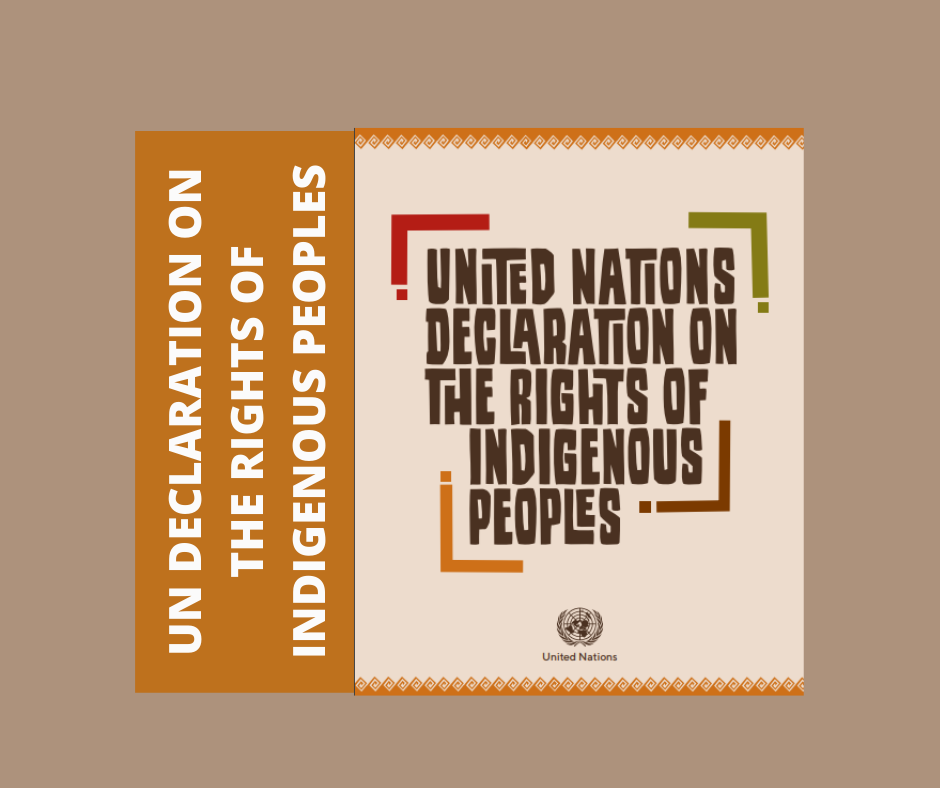The UN Declaration brings indigenous peoples’ rights, both collective and individual, together into one international human rights instrument. It establishes a universal framework of minimum standards for the survival, dignity, well-being and rights of the world’s indigenous peoples.
The UN Declaration has 24 preambular paragraphs and 46 Articles that cover a range of human rights and fundamental freedoms related to indigenous peoples. These include the right of self-determination, ownership and use of traditional lands and natural resources, the honouring of treaties and agreements between states and indigenous peoples, protection against genocide, protection of cultural and intellectual property, and rights:
- To preserve and develop their cultural characteristics and distinct identities;
- To maintain and strengthen their own institutions, cultures and traditions;
- To participate in the political, economic and social life of the society in which they live; and
- To pursue their own visions of economic, social and cultural development.
The UN Declaration highlights the requirement on states to obtain the free, prior and informed consent of indigenous peoples before making any decisions affecting their property, territories, rights or interests. It explicitly encourages “harmonious and cooperative relations” between states and indigenous peoples, and refers to procedures for resolving disputes between indigenous peoples and governments.
The UN Declaration had a lengthy and arduous journey through the UN system, beginning in 1985 when representatives of indigenous peoples’ organisations and states began drafting the text, and twenty-two years of negotiations where some states – including New Zealand – attempted to weaken its provisions.
It was adopted by an overwhelming majority of the UN General Assembly in 2007, with a recorded vote of 143 states in favour, 11 abstentions, and 4 – Australia, Canada, New Zealand and the United States – against. The four states that voted against the adoption of the UN Declaration subsequently made announcements of support for it – Australia in 2009, then New Zealand, Canada and the United States in 2010.
Although it is a non-binding text (that is, a Declaration rather than a Covenant or a Convention which can be signed and ratified), the UN Declaration is used by the UN human rights treaty monitoring bodies as a standard to judge state compliance with the legally binding human rights instruments they monitor (as, for example, UN Committee on the Elimination of Racial Discrimination [CERD] did in 2013 in relation to New Zealand), and as a normative framework by the Special Rapporteur on the Rights of Indigenous Peoples and other UN human rights mechanisms.
The importance of the UN Declaration was emphasised by the first World Conference on Indigenous Peoples (a high-level plenary meeting of the UN General Assembly), which was held in September 2014 at the UN Headquarters in New York to agree an action-oriented Outcome Document on the UN Declaration.
The Outcome Document begins with a paragraph welcoming indigenous peoples’ preparatory processes for the World Conference, including the 2013 Global Indigenous Preparatory Conference held in Alta (Norway) and the Alta Conference Outcome Document; it reaffirms UN member states support for the UN Declaration and their commitment “to consult and cooperate in good faith with indigenous peoples through their own representative institutions in order to obtain their free, prior and informed consent before adopting and implementing legislative or administrative measures that may affect them”; it reaffirms the solemn commitment of UN member states “to respect, promote and advance and in no way diminish the rights of indigenous peoples”; and includes commitments on specific actions to implement the UN Declaration. The UN Declaration text and related documents are available at: http://www.converge.org.nz/pma/decrips.htm
Source: Treaty of Waitangi Questions & Answers, Network Waitangi 2018

